What is Xeriscaping? Your Guide to Creating a Low-Maintenance Lawn
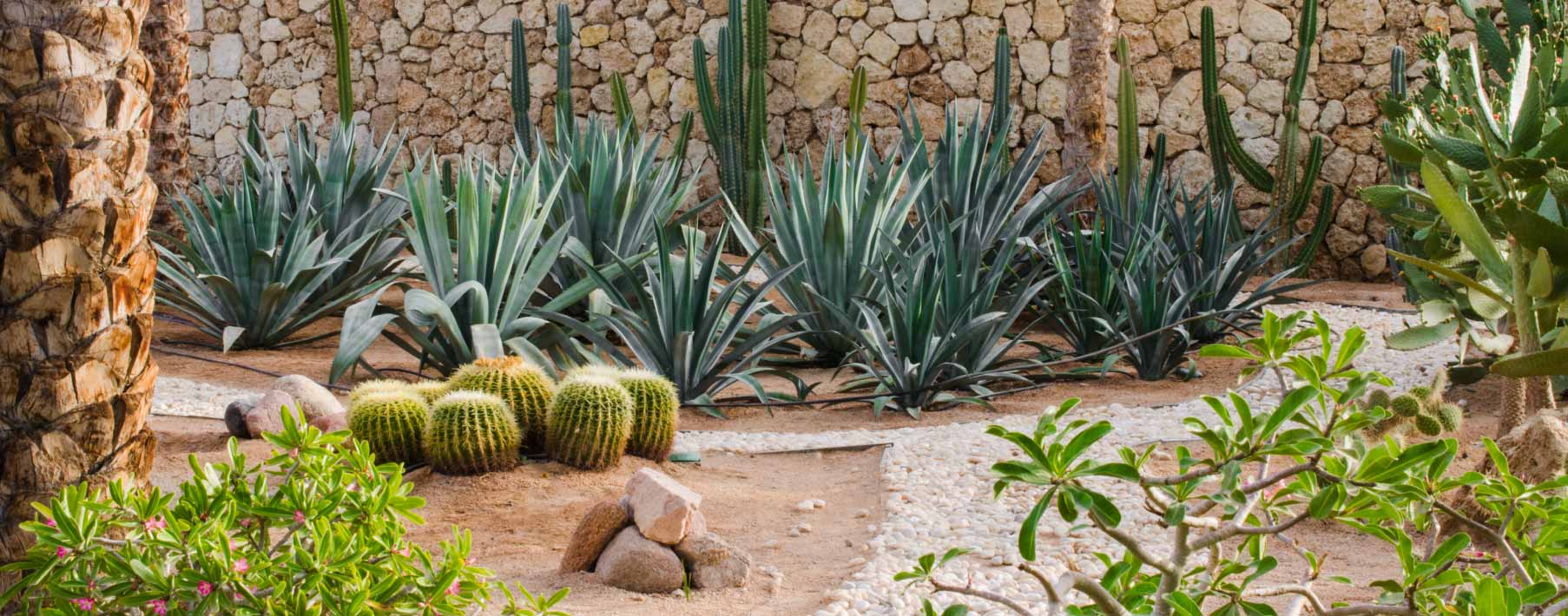
Xeriscaping is a type of drought-tolerant landscaping using rocks and native plants that works with the environment, requiring little to no maintenance or irrigation. A growing trend in recent years — especially in the south and southwest regions that are prone to dry conditions — xeriscaping can help homeowners achieve the yard of their dreams while saving money and time.
For first-time homeowners (of which there are plenty thanks to the home buying boom of the pandemic) and landscape novices, tackling xeriscaping on their own can feel pretty overwhelming. But the truth is, with a little time and research, you may not need to hire a professional to create a beautifully xeriscaped yard. In fact, you can get it done yourself in less time than you’d think.
Ready to get started? Read through the steps below then put on your gardening gloves, grab a shovel and get to work!
6 steps to creating a xeriscaped yard
Creating a xeriscaped yard requires planning, shopping and a lot of physical labor. But with the right plan and the proper tools, you can get your lawn in tip-top shape without breaking your back or your wallet.
1. Design your new lawn’s layout
Without a doubt, the most important part of properly xeriscaping your lawn is the planning and layout stage. Taking the time to consider how this update will look with the rest of your yard, as well as what features you want to incorporate will save you a lot of headaches down the line.
To make sure you get started on the right foot, you’ll need to correctly measure and draw out your yard. Decide where you want to put the edging, add in rocks or paver stones and plant native wildlife. A pro tip is to not just draw it from a birds-eye view, but make sure you take the time to draft it from every angle. Framing your new yard out from every angle will ensure you not only like your new design, but that you don’t forget any part of your yard. That way you don’t get halfway through the project and wish you had done something differently, like not place a huge feature directly in front of a window or door.
After that, you’ll need to decide the color and types of rocks, stones, decor and plant life you want to be included in your new project. If you consult any professional landscape designer, they will likely stress how important color is to the overall feel of the project. Consider how the colors will look in every season and how they harmonize with the colors and textures of your home. With the infinite color options available at your local hardware store, having already done your homework on color, style, and types of plants will help you not end up in analysis paralysis.
If you do get stuck on how to make your yard shine — or just want some more inspiration — download some home renovation apps to get some help. Collaborating with your family, asking friends for advice and scoping out other yards in your area can all help in the design process as well.
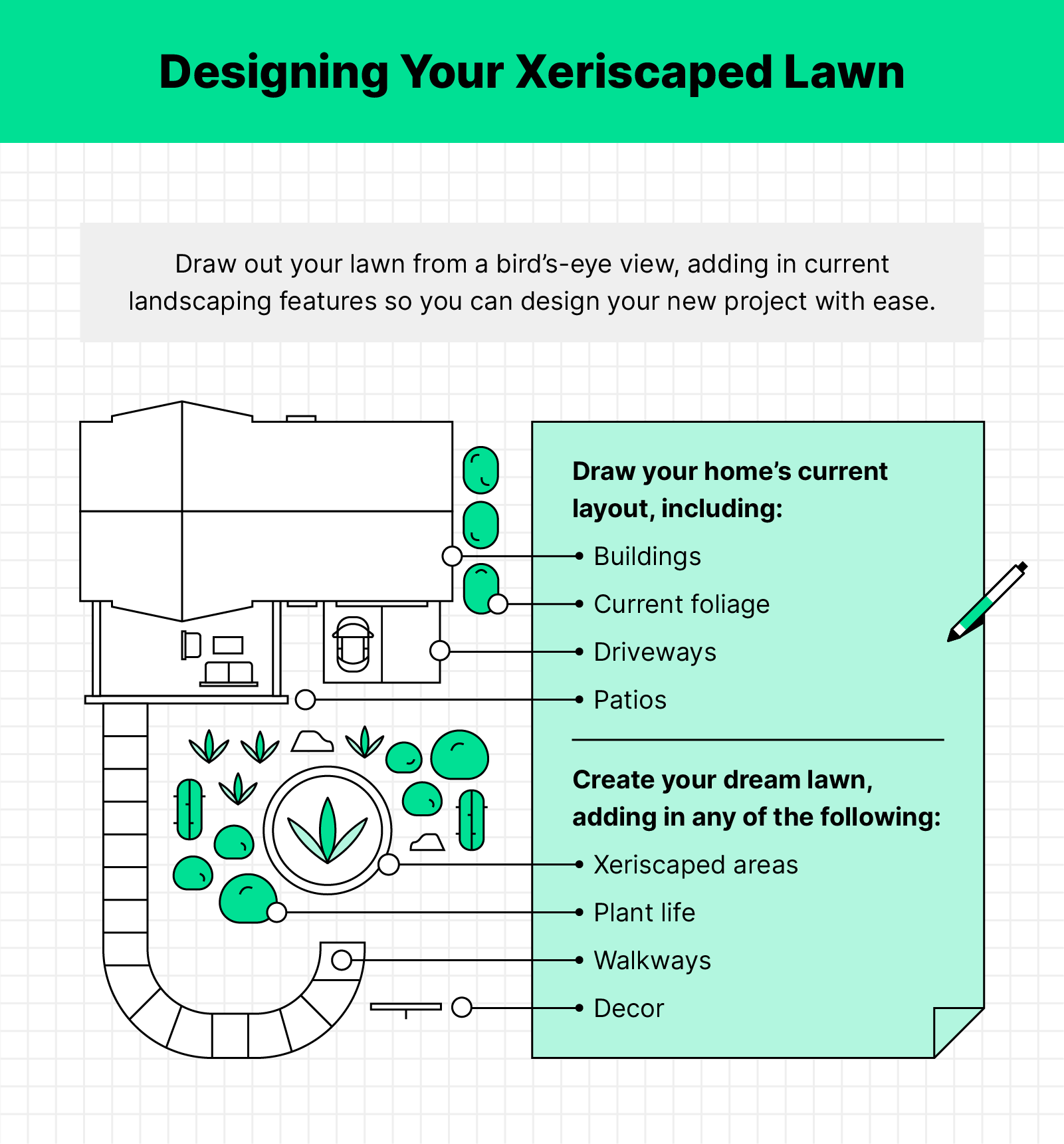
2. Calculate costs and needed supplies
After the layout has been drawn out and you have a pretty good idea of what you want the space to look like, it’s time to start adding everything up. Understanding how much it’ll cost to buy all the needed materials, tools and possible labor help is crucial to ensuring you can afford the project you’ve designed in your head (though if you’ve cooked up a rather expensive project, don’t fret. We’ve got a guide to help you budget for your household).
First, make a list of all the supplies you need. Here is a list of common supplies to help you get started.
- Metal edging
- Rocks, gravel or sand
- Weed killer
- Weed mat or cardboard
- Paver stones
- Shovels
- Lawn bags
- Native, low-water plants
- Sunscreen
- Protective clothing
- Decor or yard signs
- Chemical stump remover
You’ll also need to take into consideration the size of your landscaping project, as that will greatly affect the cost. Xeriscaping your entire yard instead of one small section will require more rocks, weed mats and edging to get the job done, which comes with a higher price tag. But keep in mind this price still pales in comparison to traditional lawn maintenance, which can cost homeowners around $6,600+ a year for mowing alone (and that price soars when taking into account other landscaping needs as well as paying for water).
Once you know how much supplies you need, it’s time to start shopping around. Check in with local gravel and landscaping companies to get a few quotes before purchasing anything to make sure you’re getting the best deal. And don’t be afraid to ask about bulk-purchase discounts, free delivery or other deals before signing on the dotted line.

3. Remove current plants and grass
Since the main point of xeriscaping is to create a maintenance-free environment, you’ll likely have to remove your current plants and grass to achieve your desired look. This includes uprooting trees, pulling out weeds and smaller plants and eliminating any grass growing in that area.
While most of this can be done by hand, sometimes you may need backup. Tools like a garden spade or pickaxe can help get the job done. Or, you can call in landscaping professionals for help tearing down your lawn, though be prepared to pay up for the cost of physical labor.
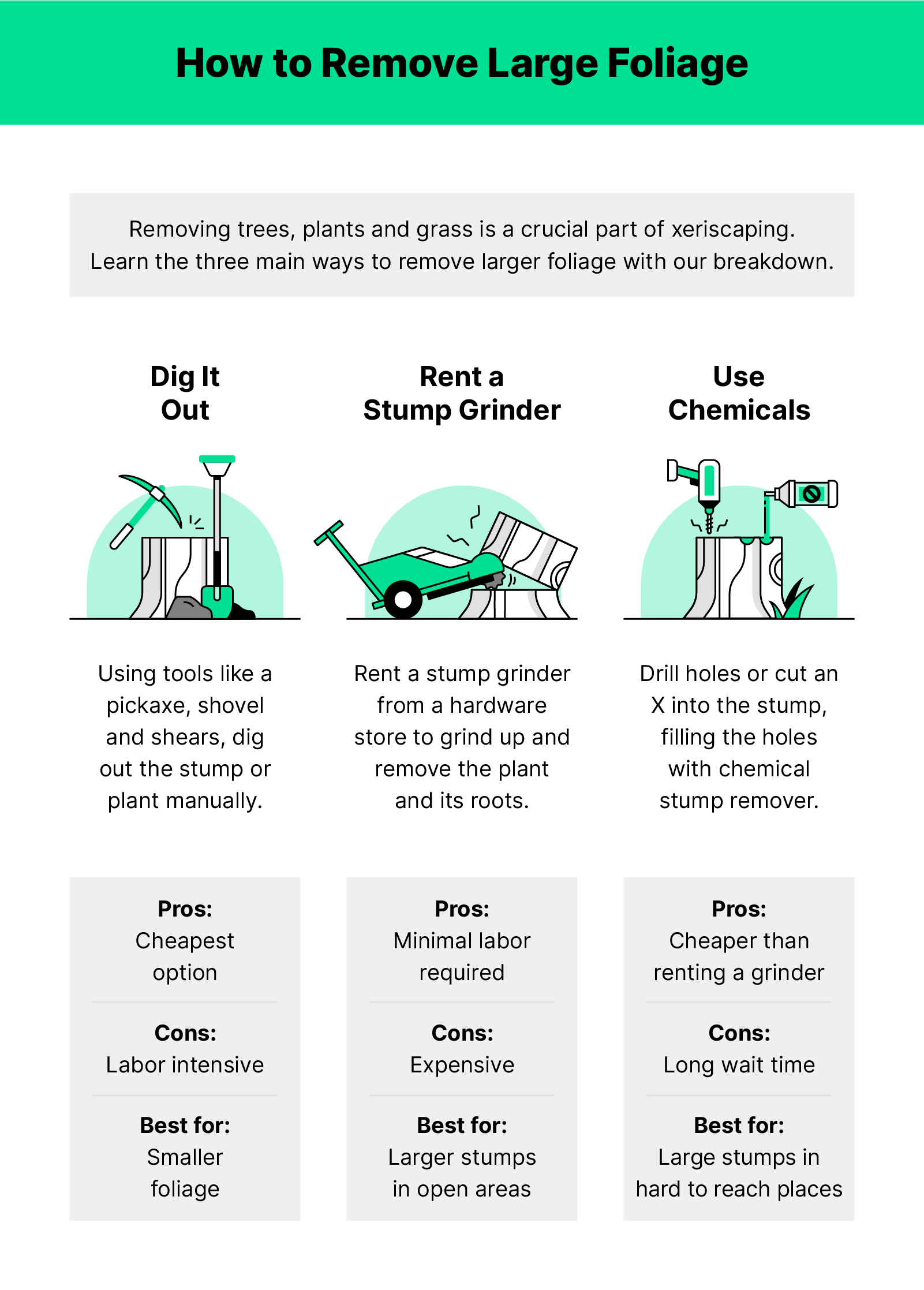
4. Treat area for weeds
Once all the plants are removed, it’s time to prep the ground. Spraying the area with weed and grass killer is a good idea, as well as laying down a weed mat to help prevent new growth long-term. If you’re going the DIY route and looking to save some cash in this area, you can also use cardboard boxes instead of a weed mat (sometimes referred to as lasagna gardening) to accomplish the same goal.
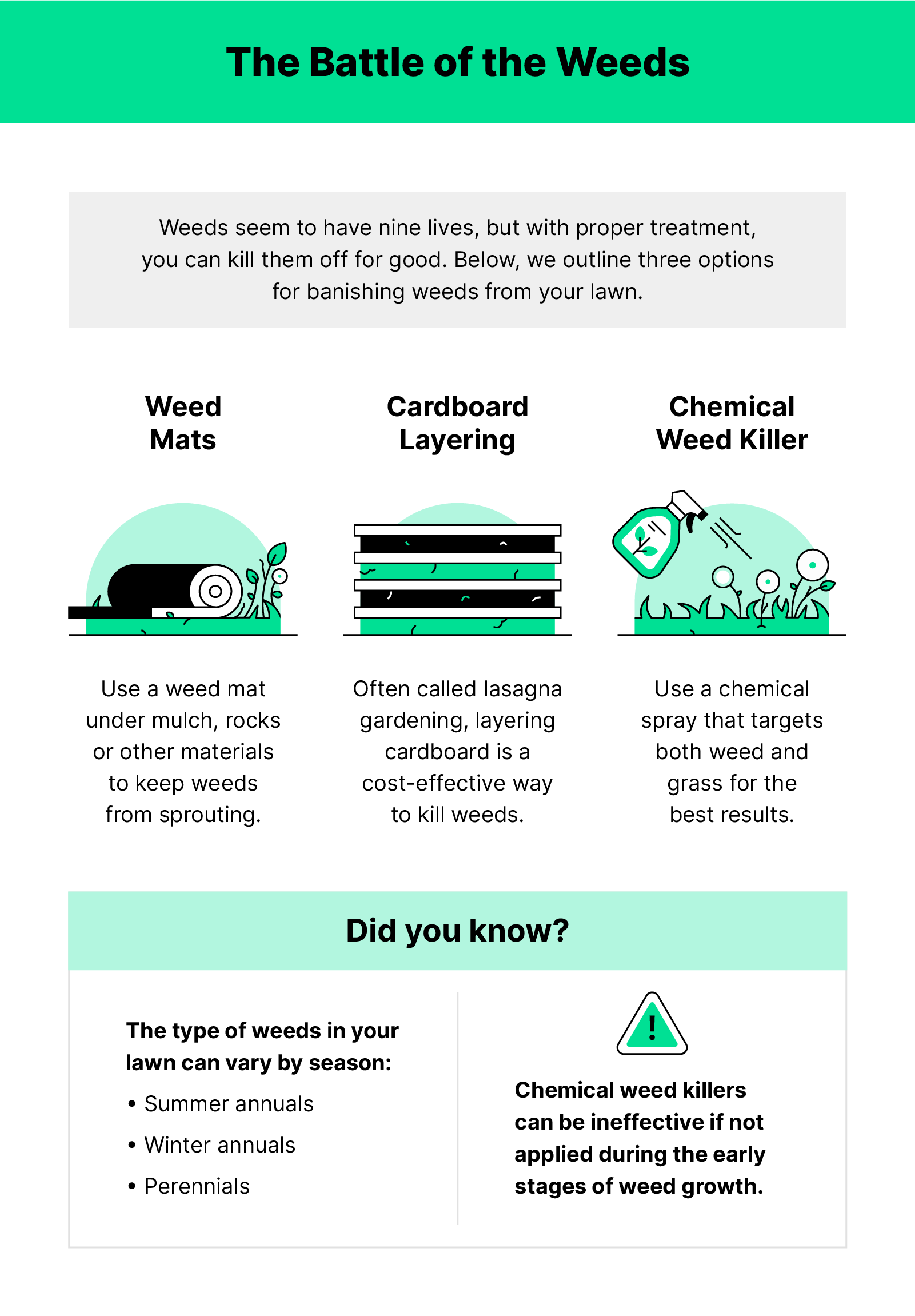
5. Plant natives and add xeriscape materials
Now you get to add in your new xeriscape materials — arguably the most rewarding step in this whole process! After all, this is the time where you finally get to see the design in your head come to life, making all the hard work well worth it.
During this phase, you’ll begin planting, laying down edging and paver stones as well as spreading out rocks. To take your lawn to the next level, we recommend using a paver base to ensure no one trips on your walkways (though your homeowners insurance will cover your liability). It’s also a smart move to focus on native plants for your region, as they will be most likely to thrive in your climate.
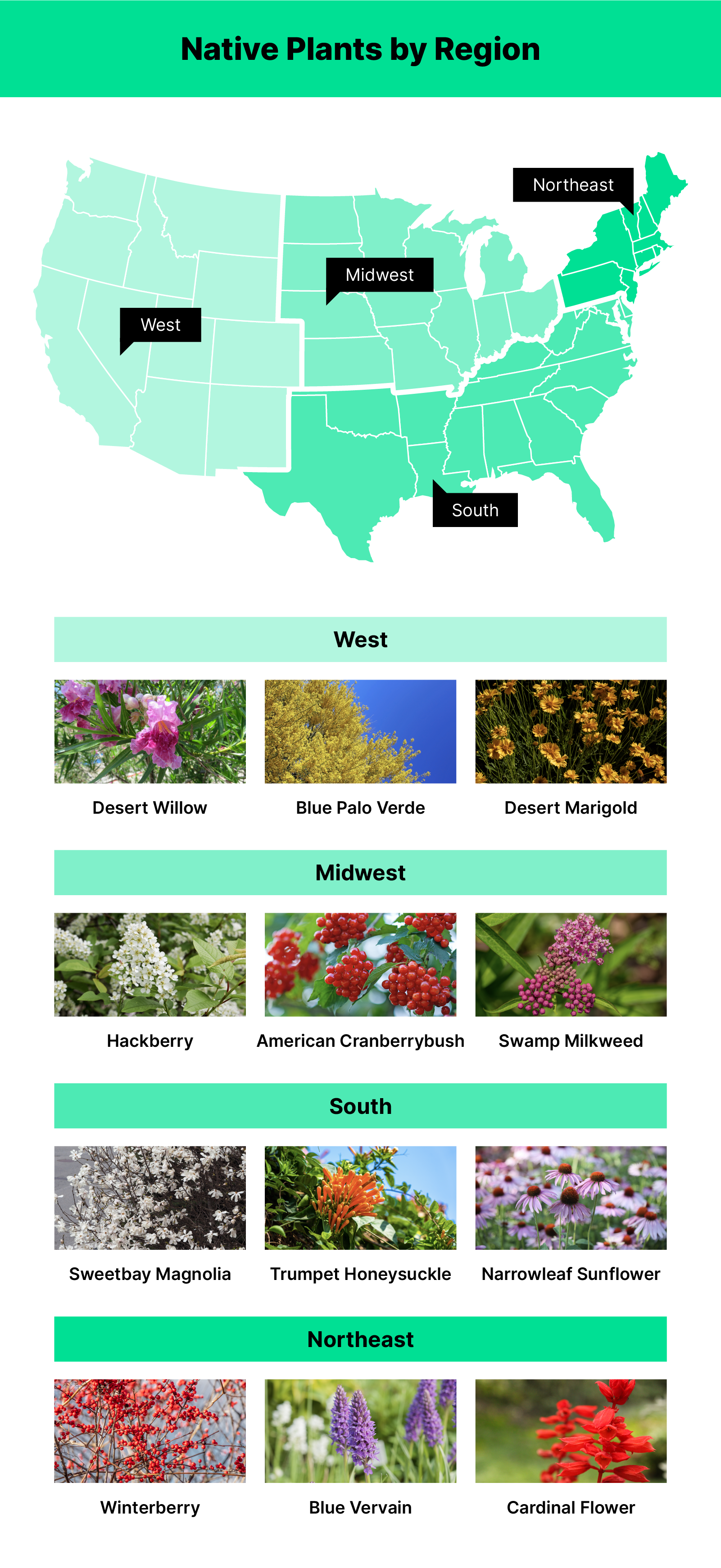
6. Add final touches
The addition of finishing touches to your completed project can help take your landscape to the next level. Consider adding in solar panel lighting, bird features, potted plants, yard signs, figurines or even your house number to help add a little extra personality to your home.
Here at Hippo, we are all about smart home technology, so you know we couldn’t get to the end of this list without mentioning a few you can add to your yard. Smart tech like water irrigation, timers, robotic lawnmowers, soil moisture meters and Bluetooth plant monitors will allow you to care for your yard with ease — whether it’s completely xeriscaped or not.
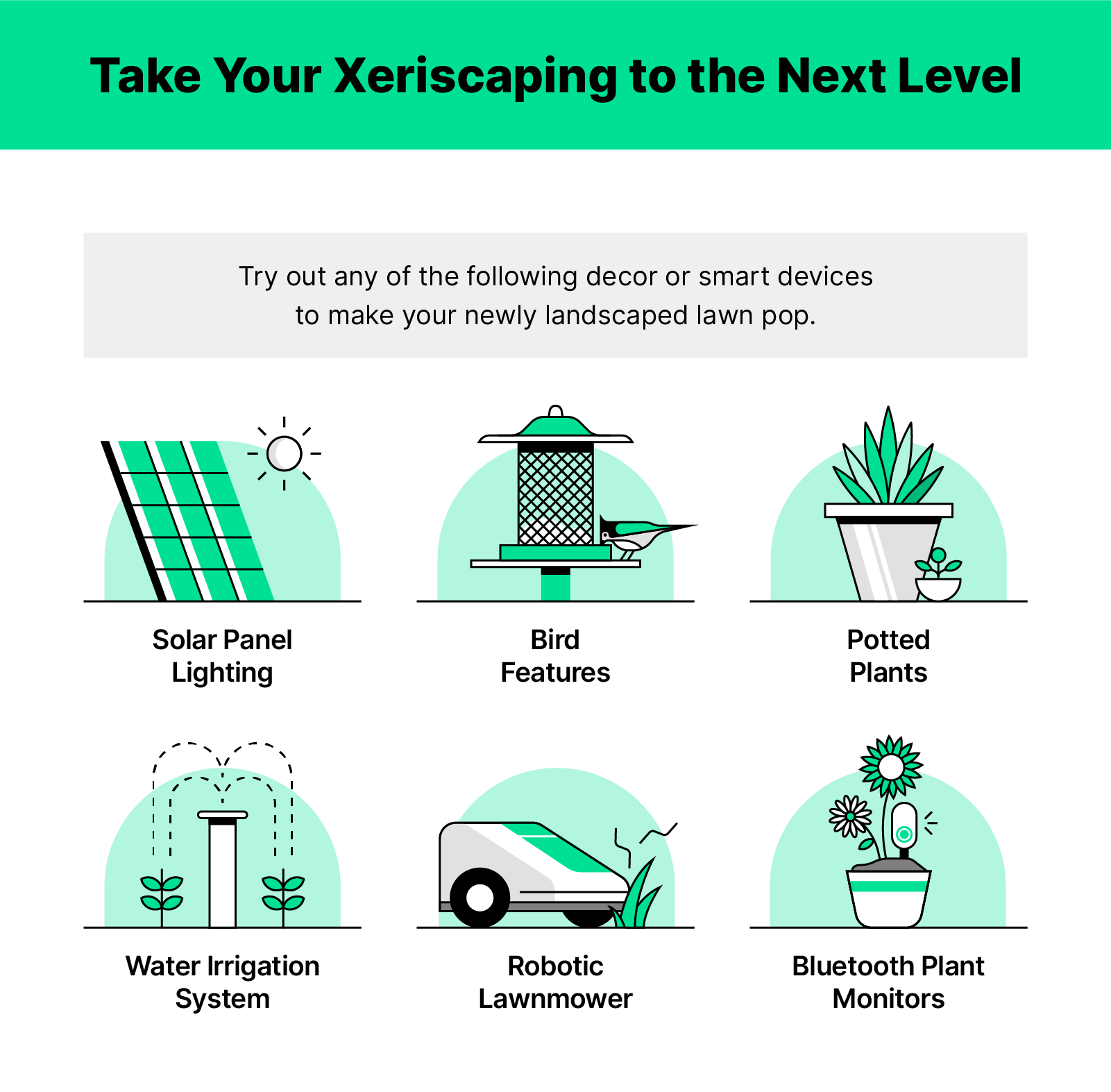
7. Create a maintenance schedule
Once the sun has set and the work is complete, before you do anything else, take a moment to appreciate the new landscape you created. You worked hard on it after all, so take some pictures and enjoy spending time in your xeriscaped oasis.
Once the new-ness has settled in, it’s a good idea to whip up a maintenance schedule for this area. While xeriscaping is meant to require minimal maintenance, a few tasks here and there can help this area thrive for years to come. Use the following tasks as a guideline for maintaining your new yard, tweaking the list as needed to fit your needs.
- Once a week: Mow and tend to nearby grass to ensure it doesn’t grow into your xeriscaped area
- A few times a month: Water native plants (as needed)
- Every few months: Check for weed growth
- If weeds are seen, pull from the root and spray with weed killer. If the issue persists, you may need to remove some of the rocks and put down more weed mats or cardboard.
- During the fall season: Blow off the leaves that have fallen on the xeriscaped area to keep your lawn looking like new.
Benefits of xeriscaping
Outside of a beautiful and modern lawn, xeriscaping provides a whole host of environmental and financial benefits that make it a no-brainer for homeowners. If you’re on the fence about putting in the work to xeriscape your front or back yard, there’s a good chance the facts below just might tip you over the edge.
- Getting your kids outside and involved in the process can be good for their mental and physical health.
- Kids who spend time outdoors can concentrate better and are more creative.
- Xeriscaping and other smart firescaping practices can help protect your home from wildfires.
- Upgrading your home can lead to increased happiness and confidence.
- 73% who took on a home improvement project during the pandemic said it improved their mental health.
- Working with your climate when landscaping can save 10% to 30% on utility bills.
- Landscaping can improve your home’s value and curb appeal.
- Yard updates can increase your property value anywhere from 5% to 13%.

How does xeriscaping affect your home's value?
Picture yourself as a prospective homebuyer — are you going to be more attracted to a beautiful, maintenance-free yard or a large garden that requires hours of weeding and plenty of water every week to maintain? The answer is easy.
Xeriscaping is a huge plus to homebuyers, in terms of both the work required as well as the appearance. According to a study from Virginia State University, proper landscaping can boost your home’s value by anywhere from 5% to 13%. So if you’re looking to sell your home soon, or just want to take advantage of the benefits xeriscaping has to offer, this type of landscaping project might be right for you.
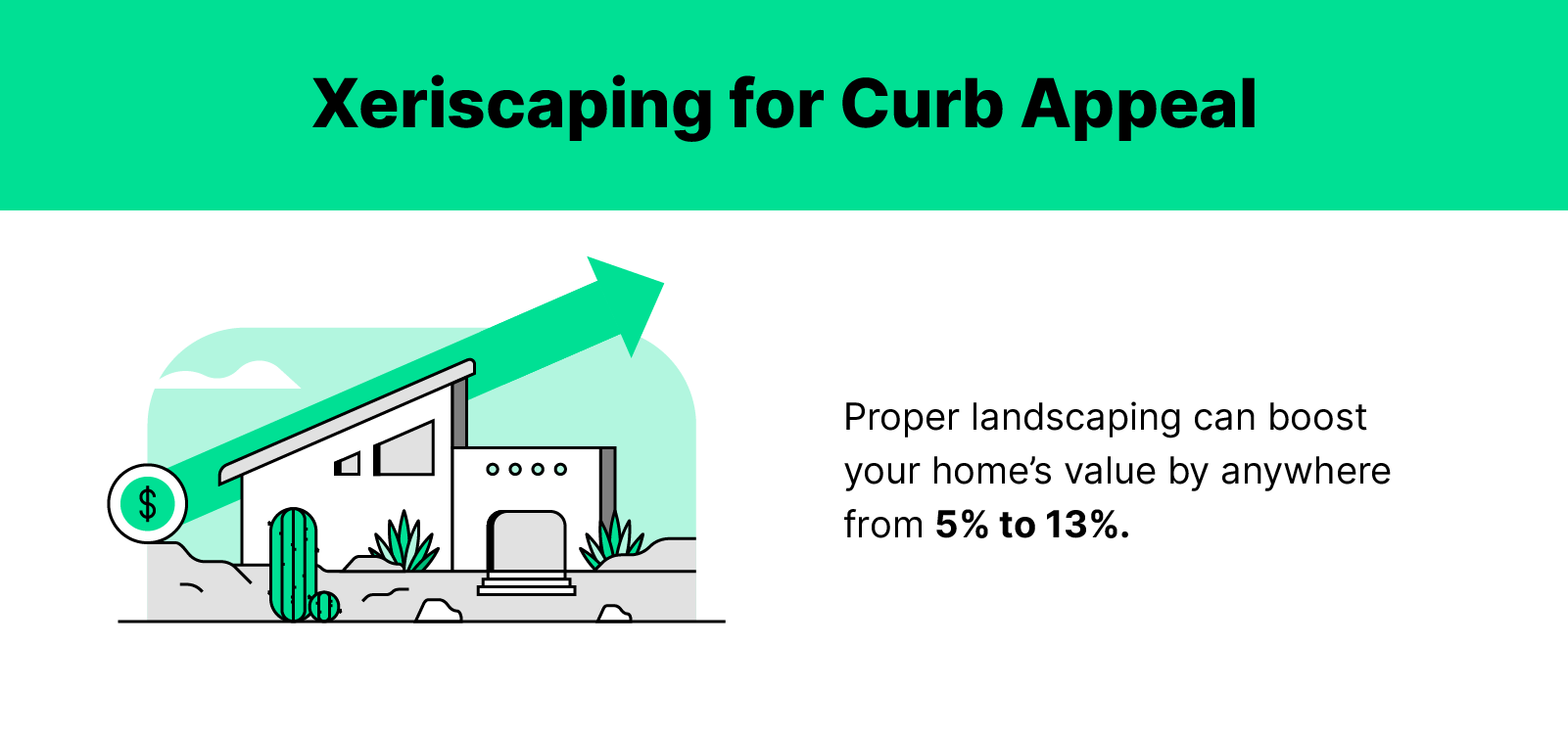
Other simple ways to increase your home’s value include updating your front door, painting your home, getting matching appliances and replacing outdated lighting fixtures.
How much does it cost to xeriscape?
As mentioned above, the cost of xeriscaping depends entirely on the size of your lawn, types of supplies purchased and if you go the DIY route or hire a professional. While completing a DIY xeriscaping project in a small portion of your yard can cost you under $1,000 for the rocks, edging, weed mat and native plants; larger projects done by professionals can cost much more (an average of $17,000, in fact).
Before you write off a xeriscaping project altogether due to the sticker shock, you should know that there are some programs available to help homeowners get needed renovations completed. Actually, for home upgrades that improve your community or the environment, you can even get paid! For more information, check out our post on home improvement programs.
Whether you just completed a xeriscaping project or are on the cusp of finishing up another home improvement project, it’s best to let your insurance provider know about any changes made to your home. That way, you can get your hard work the extra protection it deserves. To learn more about your home’s value and how Hippo takes home insurance to the next level, give us a call.




